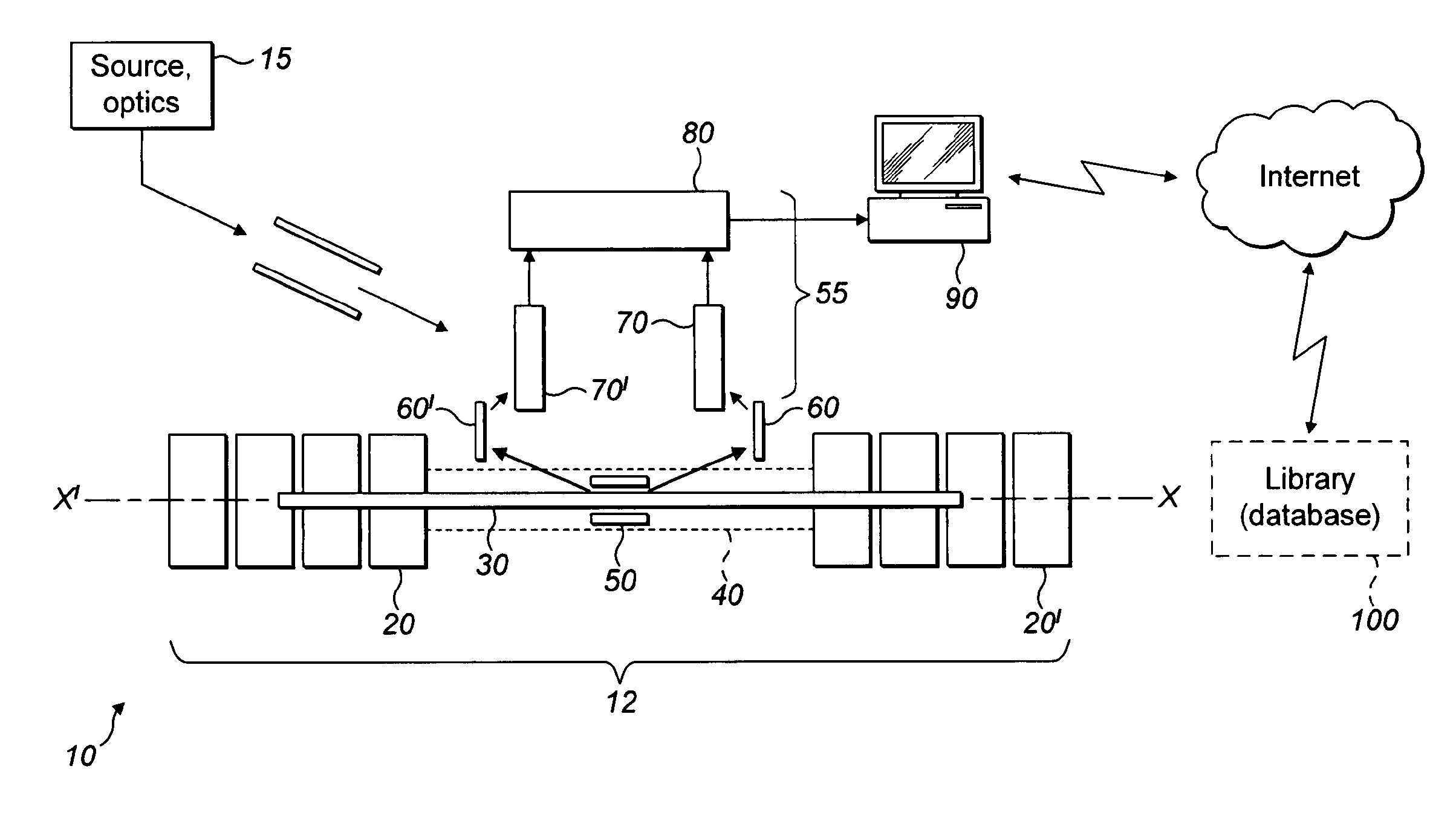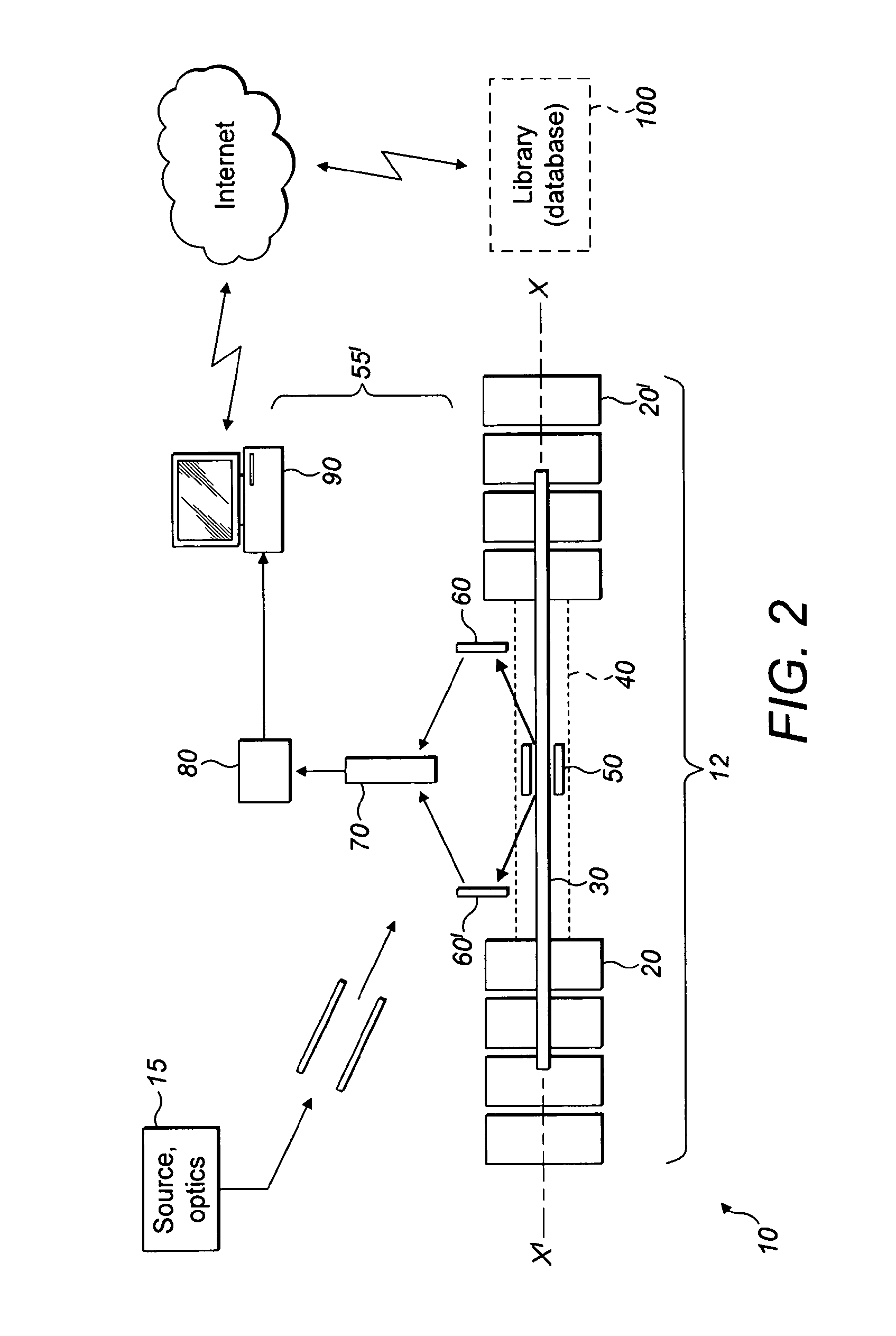Method of multi-reflecting timeof flight mass spectrometry with spectral peaks arranged in order of ion ejection from the mass spectrometer
a mass spectrometry and time-of-flight technology, applied in the field of sample identification, can solve the problems of inherently less sensitive, slow technique, and large cost, and achieve the effect of reducing collisions with neutral matrix molecules and minimising post-source decay
- Summary
- Abstract
- Description
- Claims
- Application Information
AI Technical Summary
Benefits of technology
Problems solved by technology
Method used
Image
Examples
Embodiment Construction
[0054]Referring first to FIG. 1, a multi-reflection time of flight (MR TOF) mass spectrometer instrument 10 is shown. The instrument 10 comprises a closed mirror MR TOF arrangement indicated generally by reference numeral 12 and an ion detection arrangement shown generally at reference numeral 55.
[0055]Ions are generated at an ion source and then guided using ion optics toward the closed mirror MR TOF 12. The ion source and optics is shown generally at reference numeral 15 in block form. The specific arrangement of the ion source and ion optics does not form a part of the present invention and in any event will be familiar to those skilled in the art. The ion source is, in preference, a matrix assisted laser desorption ionization (MALDI) source, although other ion sources such as an electrospray source may be used. As of 2011, bacterial electrospray ionization is not an established technique, however.
[0056]Ions generated by the ion source and guided by the ion optics 15 are directed...
PUM
 Login to View More
Login to View More Abstract
Description
Claims
Application Information
 Login to View More
Login to View More - R&D
- Intellectual Property
- Life Sciences
- Materials
- Tech Scout
- Unparalleled Data Quality
- Higher Quality Content
- 60% Fewer Hallucinations
Browse by: Latest US Patents, China's latest patents, Technical Efficacy Thesaurus, Application Domain, Technology Topic, Popular Technical Reports.
© 2025 PatSnap. All rights reserved.Legal|Privacy policy|Modern Slavery Act Transparency Statement|Sitemap|About US| Contact US: help@patsnap.com



